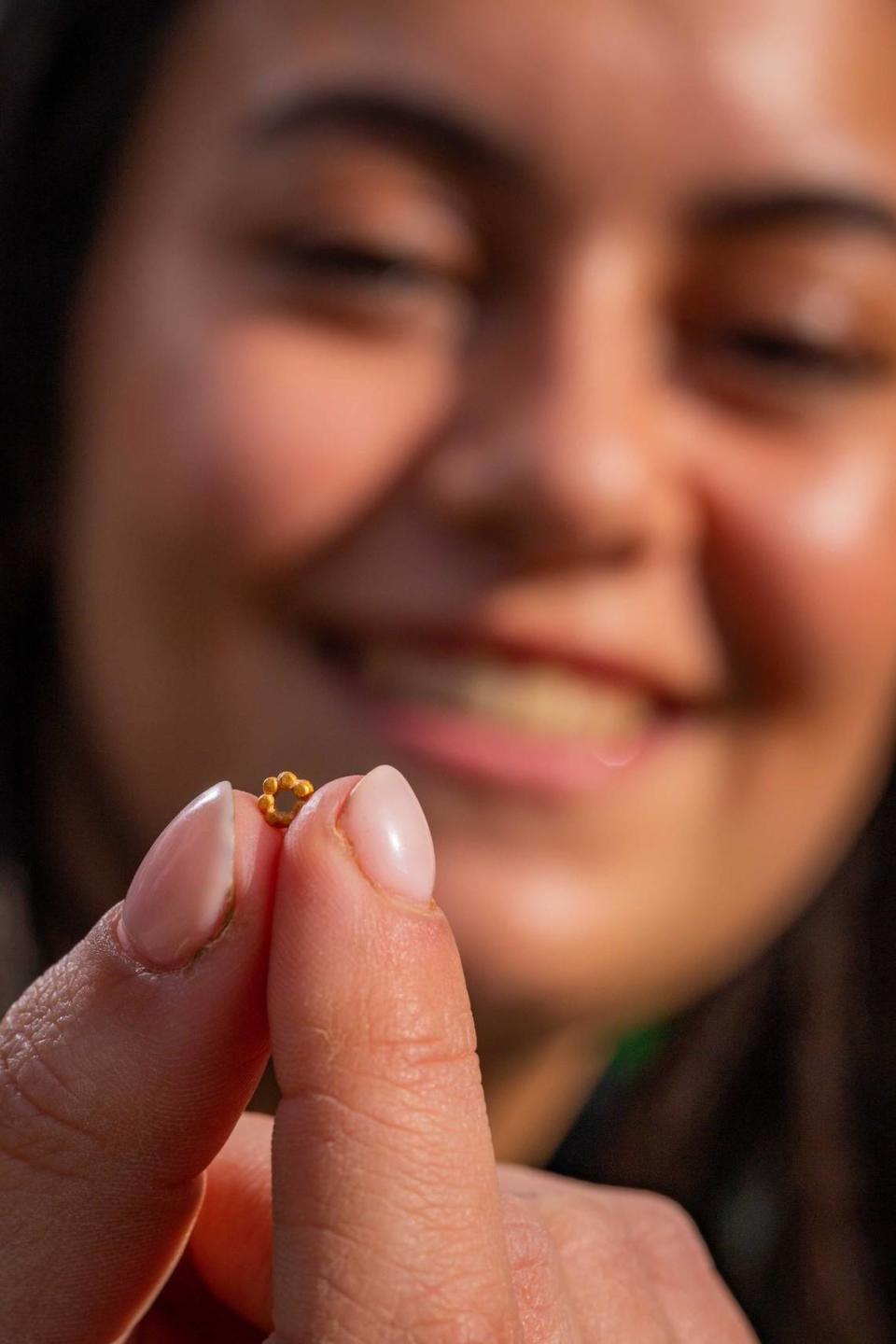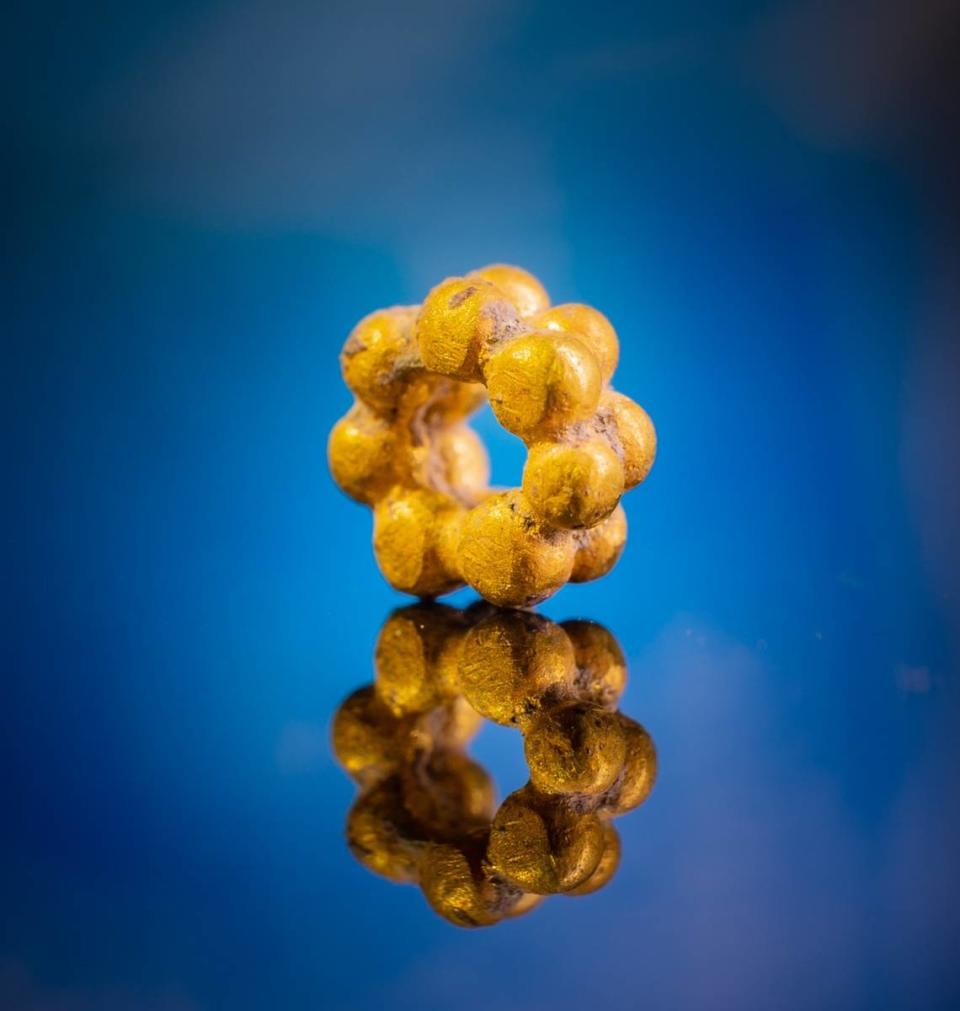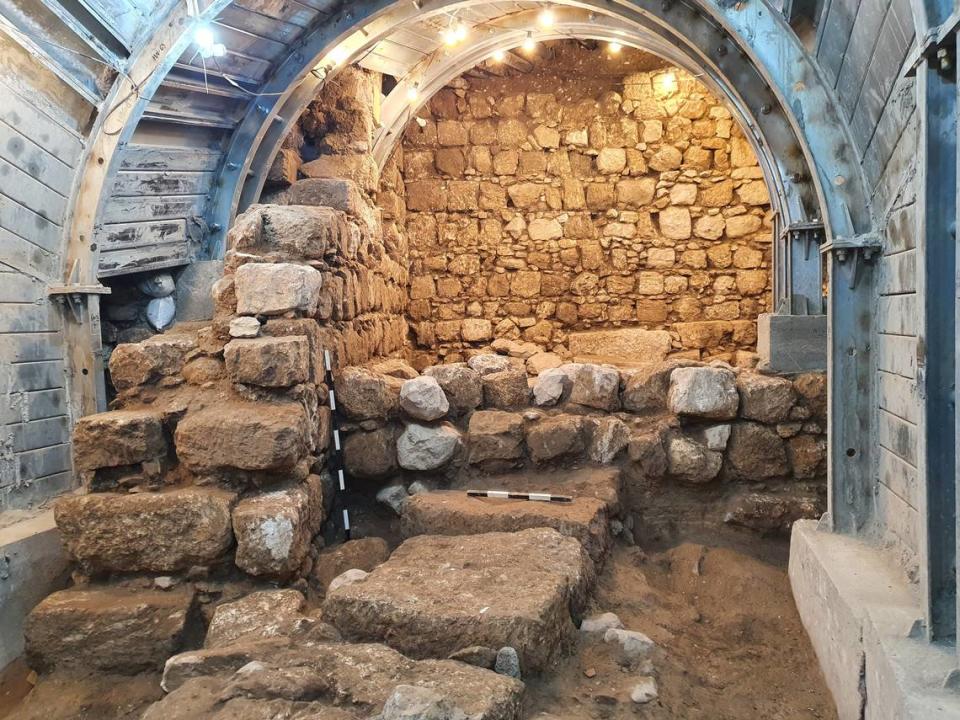Volunteer finds shiny object in dirt and unearths 1,600-year-old artifact in Jerusalem
Sifting through some dirt at a park in Jerusalem, a volunteer noticed a shiny object — and uncovered a “very, very special” artifact.
Hallel Feidman was volunteering at Emek Tzurim National Park in east Jerusalem and helping sift through dirt collected at nearby archaeological sites, the Israel Antiquities Authority said in a Wednesday, Feb. 8, news release.
“I poured the pail onto the sieve and began to wash the material,” Feidman said. “Then I saw something shiny in the corner of the sieve, different, that I don’t normally see.”
The 18-year-old took the item to an archaeologist who confirmed it was a small bead “made from pure gold,” officials said.

The ring-shaped bead was made of seven smaller gold balls intricately welded together, photos show. The technique used to craft the bead likely originates in Mesopotamia, the release said. The artifact has a “distinctive importance” for both its craftsmanship and its material.
“Throughout all my years in archaeology, I have found gold perhaps once or twice,” Amir Golani, an ancient jewelry expert at the Israel Antiquities Authority, said in the release, “so to find gold jewelry, is something very very special.”

The golden bead was likely part of a bracelet or necklace, experts said. It may have been given as a gift or passed through a family as an inheritance.
“Beads of this style are not common,” experts said. “Only a few dozen gold beads have been found in Israel.”
The bead came from the dirt of a “grandiose” Roman structure, Israeli archaeologists said. The exact age of the bead is unknown, but based on the age of the structure where it was found, the artifact is at least 1,600 years old, experts said.
At the structure, archaeologists have uncovered imported pottery and mosaic flooring, officials said.

“Although (the bead) is a tiny find, it is precisely the personal, day-to-day items that manage to touch and connect us more than anything else, directly, to a certain person,” Eli Escusido, director of the Israel Antiquities Authority, said in the release.
“A close examination of this object fills one with a deep sense of admiration for the technical skill and ability of those who came before us many centuries ago,” he said.
Trove of Mayan ceramics could give insight to life under ‘iconic’ ruler 1,400 years ago
Weapon? Magic object? Man with metal detector stumbles upon mysterious Roman artifact
700-year-old synagogue found in abandoned cocktail bar in Spain. Take a look inside

